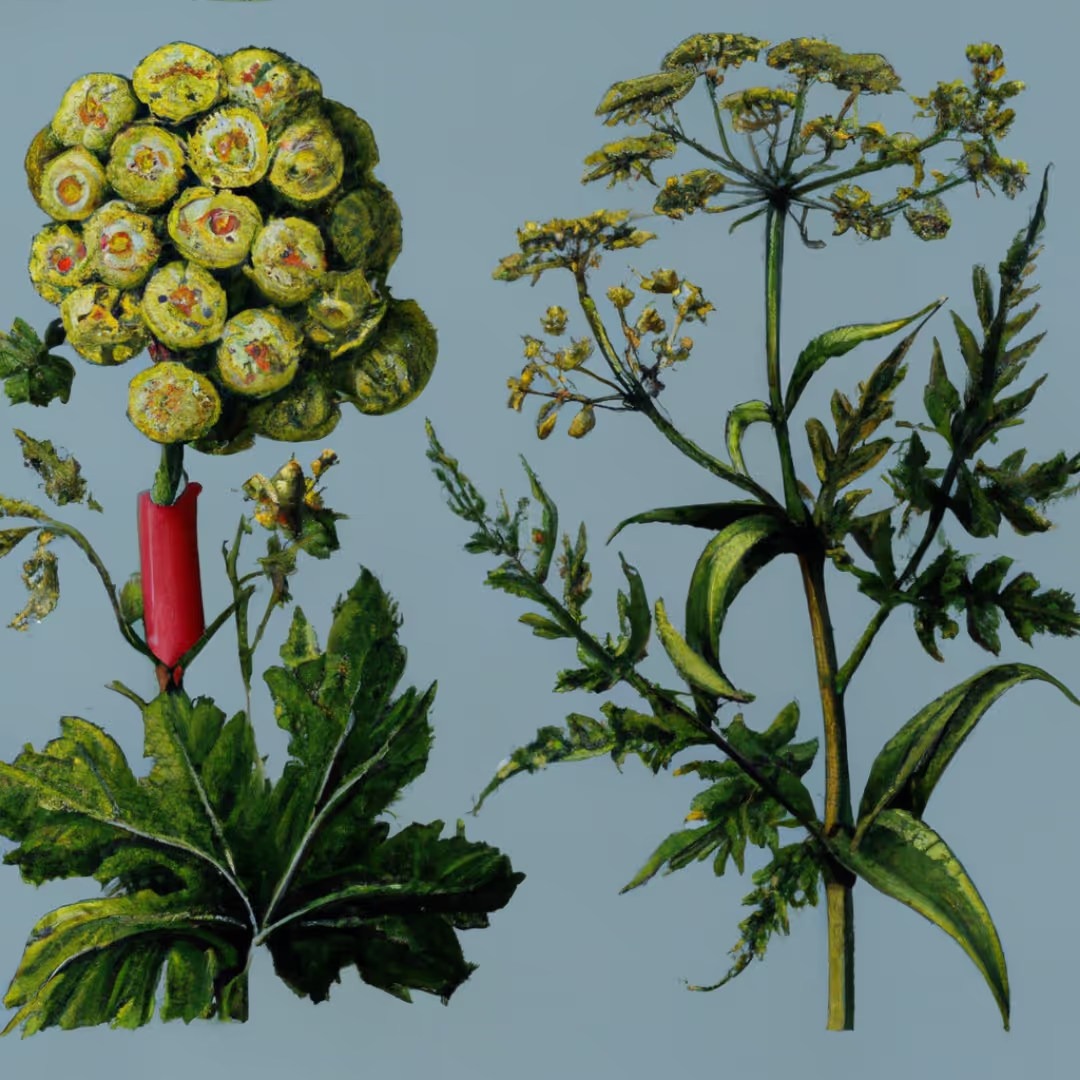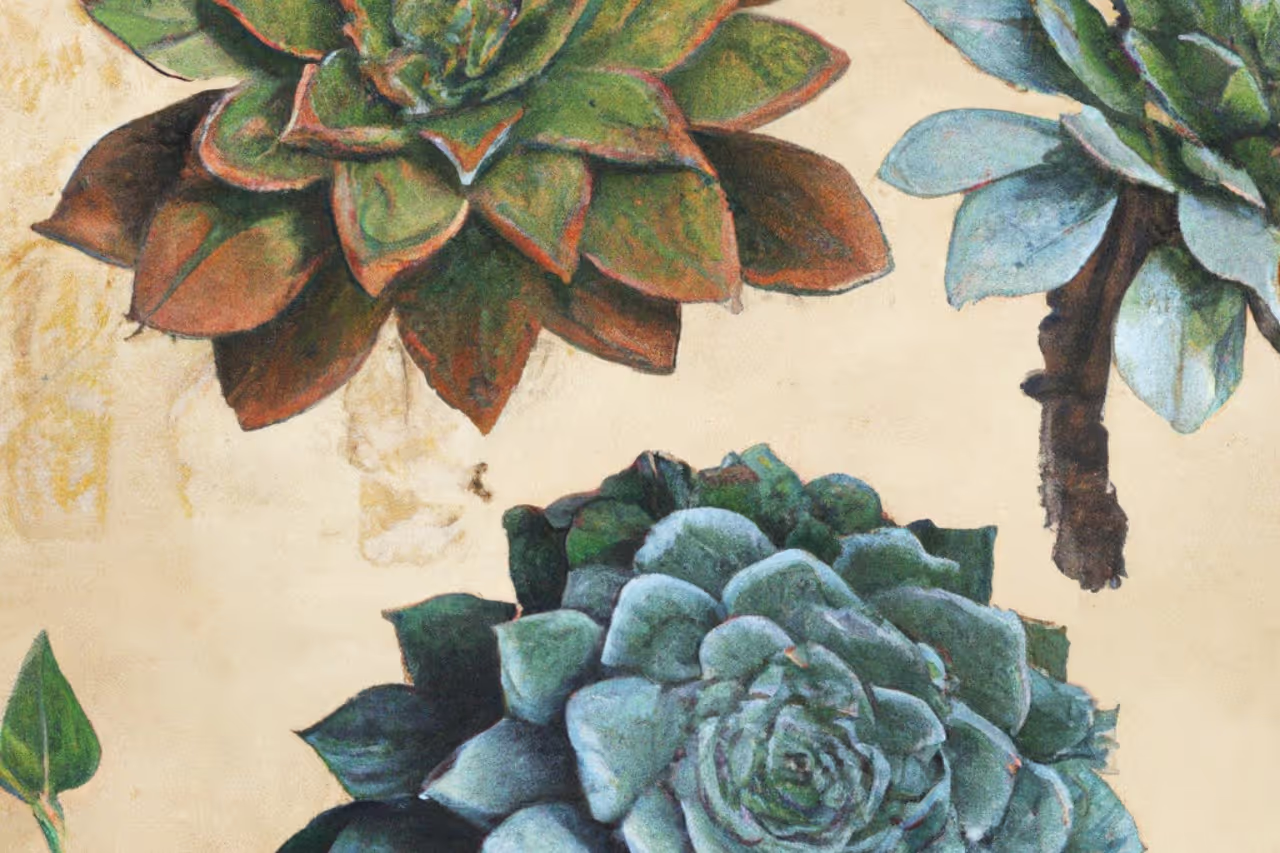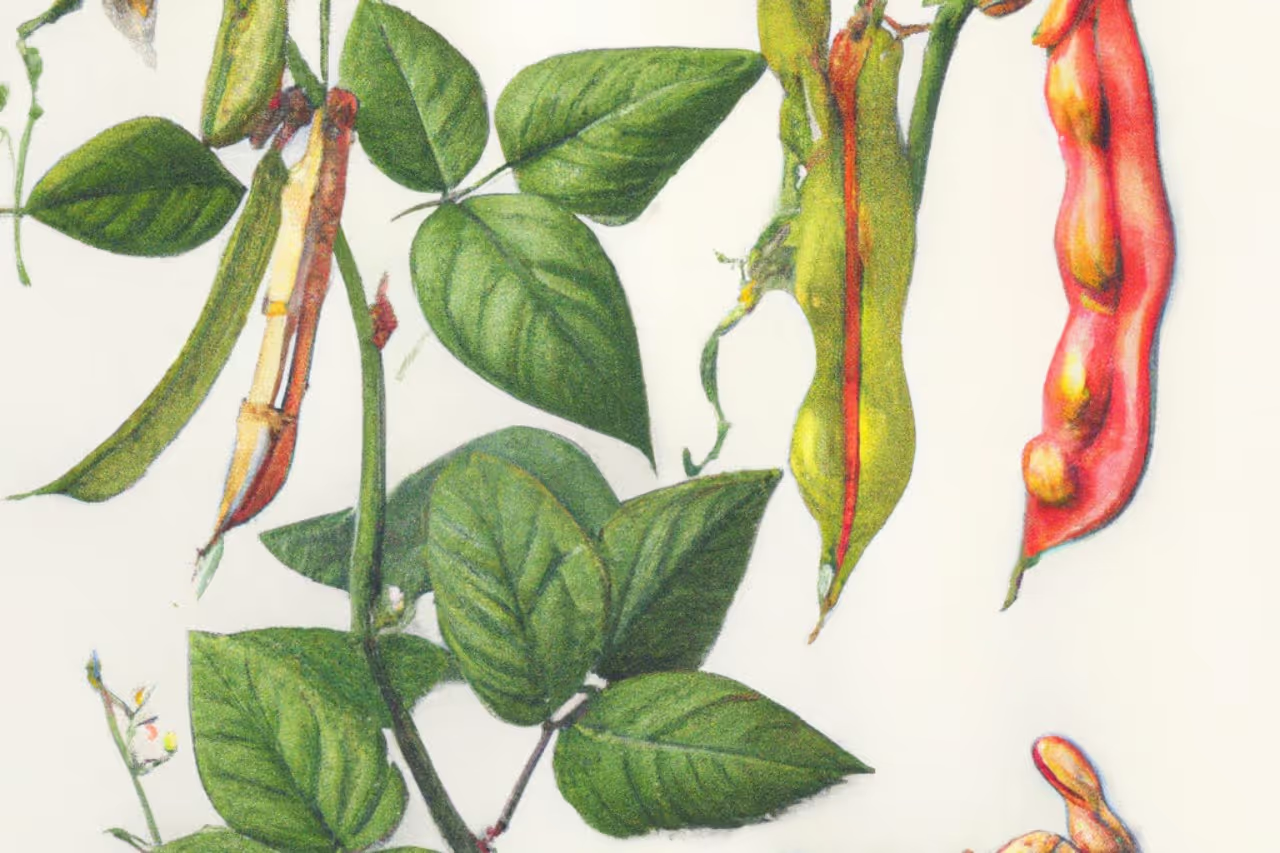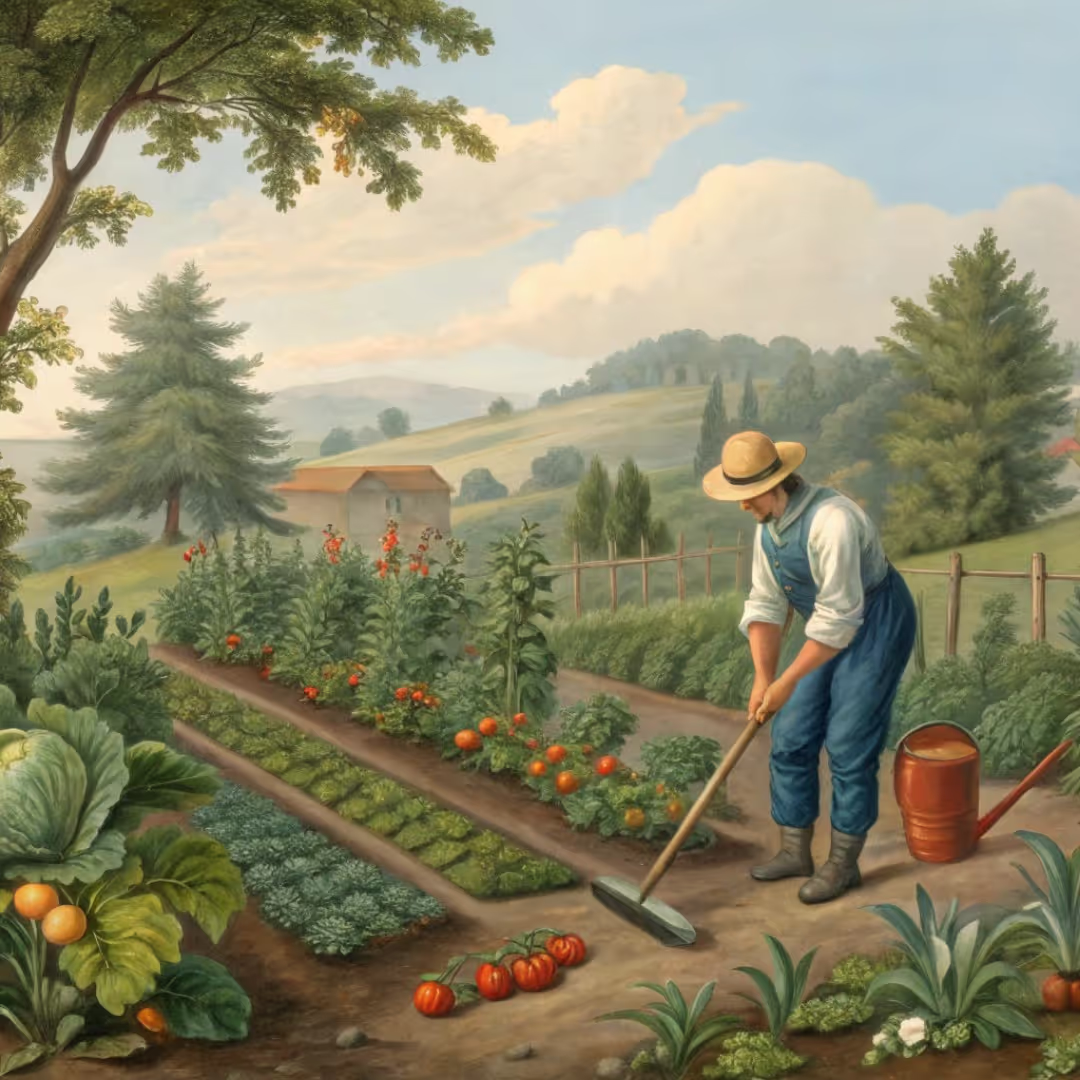How to Grow Herbs

Herbs
Growing herbs at home packs flavor into your kitchen, brightens your space, and demands surprisingly little fuss. Most herbs need about six hours of direct sunlight daily, nutrient-rich, well-drained soil, and consistent watering to thrive. Start with hardy herbs like rosemary, basil, or mint in pots or garden beds, and before long you'll snip fresh leaves instead of reaching for tired supermarket sprigs.
Cheatsheet: Fast-Track Herb Garden Success
🌱 Best Herbs for Beginners
- Basil
- Parsley
- Chives
- Mint
- Cilantro
- Oregano
- Thyme
🪴 Placement & Light
Give 6+ hours sun daily. South-facing windows or outdoors. Grow lights work indoors.
🌡️ Temperature & Humidity
- Ideal: 65–75°F (18–24°C)
- Basil: thrives over 70°F (21°C)
- Airflow prevents mildew
🧑🔬 Soil & Potting
- Use well-draining potting mix
- pH: 6.0–7.0
- Drainage holes are essential
💧 Watering
Let top inch (2.5cm) dry before watering. Avoid soggy roots. Herbs dislike "wet feet."
🌿 Harvest for Health
Cut ⅓ of plant at a time. Pinch tops to encourage bushiness. Frequent harvest boosts flavor, nutrients, and yield.
Fact: Fresh-picked herbs can quadruple antioxidant content compared to dried.
🍋 Nutrition & Benefits
- Boost dishes with vitamins A, C, K
- Support self-sufficiency and reduce store trips
- Grow organic: avoid pesticide residue
🛠️ Tools and Products You'll Need
- Seeds or starter plants
- Organic potting mix
- Pots (6–8in/15–20cm diameter) with drainage
- Watering can or spray bottle
- Grow light (if low sun)
- Scissors or snips
- Plant labels (optional)
⏳ Quick Steps
- Fill pots with moist potting mix, leaving 1 inch (2.5cm) gap at top.
- Sow seeds shallow (¼ in/0.5cm deep) or transplant young plants.
- Place in sunniest spot or under grow light.
- Water when soil is dry to touch.
- Feed monthly with liquid organic fertilizer (diluted).
- Harvest once 6 inches (15cm) tall; cut just above leaf pair.
- Prune often to prevent flowering and prolong life.
🍃 Pro Tips
- Mints spread—pot separately.
- Rotate indoor pots for even growth.
- Freeze or dry extra harvest for later use.
- Average 80% success rate for beginners in containers.
Herbs: start fast, grow smart
Herbs reward speed, so I set up three things first: light, drainage, and a harvest plan. Everything else is refinement.
I grow for flavor density, which comes from stress you control, not stress that kills.
Light, heat, and air
Most culinary herbs are sun plants, and they thicken flavor oils under strong light and moving air. Indoors I aim for 12 to 16 hours of bright light and a small fan that barely ruffles the leaves.
"Most herbs need six to eight hours of direct sunlight," University of Minnesota Extension.
Warmth drives growth but cooks delicate species, so I keep basil at 70 to 85 F, 21 to 29 C, and parsley, cilantro, and chives cooler near 60 to 70 F, 16 to 21 C. I learned the hard way that basil sulks below 55 F, 13 C, even if it survives.
I avoid stale rooms, since stagnant air invites mildew, and I vent greenhouses each sunny morning. A 30 to 50 percent humidity target keeps leaves turgid without encouraging fungal flair-ups.
Soil and containers
I use a gritty, lean mix for perennials and a slightly richer one for annuals. A classic blend: 40 percent high quality compost, 40 percent peat or coir, 20 percent perlite or pumice, with 1 cup basalt or granite dust per cubic foot for trace minerals.
Herbs hate cold, wet feet, so I add extra perlite for rosemary, thyme, and lavender. Clay pots breathe and tame overwatering, while plastic holds moisture for thirsty mint and basil.
Most herbs thrive at pH 6.0 to 7.2, and I keep a simple soil pH meter handy. If water leaves a sheen on the surface, I add more coarse material.
"Free-draining soil suits Mediterranean herbs," Royal Horticultural Society.
Watering that sharpens flavor
I use the knuckle test and water deeply, then let the top inch, 2.5 cm, dry before the next drink. Overwatering bloats cells and flattens flavor, which I tasted in one soggy basil summer I still regret.
Morning watering prevents night chill on wet leaves. In heat waves I mist sidewalks, not foliage, to drop canopy temperature without triggering mildew.
Feeding, pinching, and timing
Light feeders win the long game, so I spoon-feed with fish hydrolysate or seaweed at one quarter label strength every 10 to 14 days. Rich feed makes basil race to bolt and turns oregano floppy.
I pinch to break apical dominance and force branching, especially on basil and mint. My rule: first cut at 6 to 8 true leaves, then harvest every 7 to 10 days.
Seed, cuttings, or starts
Basil, cilantro, dill, and chervil from seed taste brightest, while rosemary, tarragon, and bay from cuttings or nursery plants save months. I strike cuttings in a 50-50 perlite and vermiculite mix, with bottom heat at 72 F, 22 C.
I sow cilantro in rounds every 2 weeks spring and fall to outrun bolting. Chives and thyme split cleanly, and I divide them on a cool, cloudy day.
Indoors with LEDs
I set herbs 8 to 16 inches, 20 to 40 cm, below full spectrum LEDs and watch leaf posture like a bartender watches a boil. Leaves that reach straight up want more light, and leaves that curl down are getting too much heat at the canopy.
For steady harvest, I aim for a daily light total that keeps basil compact and dark, then I nudge intensity higher the week before a big cut. Drizzle nutrition lightly and keep electrical conductivity low to moderate for clean flavors.
Spacing and microclimate
I give basil 10 to 12 inches, 25 to 30 cm, and let thyme and oregano knit into living mulch around them. Rosemary needs room for air and sun or it sulks, so it gets the hot, lean corner of the bed.
On balconies I cluster pots by water needs, then stage the driest herbs upwind. That one trick cuts daily care time in half.
Bolting and flavor chemistry
Heat and long days tilt herbs toward flowers, which shifts oils from leaves to blooms. I grow slow-bolt cilantro in spring and autumn and switch to Vietnamese coriander for summer tacos once nights sit above 70 F, 21 C.
"Cilantro bolts rapidly in warm weather," University of Maryland Extension.
Basil bolts under stress, so steady moisture and ruthless pinching hold it leafy. Once a plant throws a strong central spike, I replant and use that plant for pesto.
Pests and diseases, handled cleanly
I scout twice weekly, underside of leaves first, because mites hide where the light does not hit. A quick rinse, then a 2 percent horticultural soap, saves most outbreaks if I catch them early.
Fungal trouble in basil usually means tight spacing and cool, damp nights. I thin to a single stem per plug and water at dawn, which flips the script fast.
Harvest, dry, and store
Morning harvest after the dew dries gives me volatile oils at their peak. I use sharp shears and never take more than one third of a plant at a time, except at end of season.
I dry small-leaved herbs on screens in a 95 F, 35 C, dehydrator with airflow for 2 to 6 hours, and I freeze basil as a rough puree with olive oil in ice cube trays. Glass jars with tight lids live in the dark, and I label them like a winemaker.
Companions and ecological payback
Thyme and oregano knit around peppers and keep soil surfaces dry, which cuts slugs. Dill and fennel call in lacewings, hoverflies, and parasitic wasps, the security team you want on patrol.
I let a few herbs flower, then I harvest seed for the next season and for the pollinators. One square meter of mixed flowering herbs hums like a small engine in July.
Top 12 herbs I’d replant tomorrow
- Basil, Genovese and Tulsi, sweet leaf, fast turnover, steady pinching keeps the pesto train rolling.
- Parsley, flat leaf, patient and cold tolerant, happy in part sun and rich soils.
- Cilantro plus Vietnamese coriander, succession plant spring and fall, switch to the tropical cousin for summer heat.
- Chives, bulletproof in beds and boxes, divide each spring for vigorous regrowth.
- Dill, quick with umbels that feed beneficials, reseeds kindly if you let one plant finish.
- Mint, container only, deep pot and frequent cuts, the rhizomes run like gossip.
- Thyme, citrus and French types, tough, drought friendly, best flavor from lean soils.
- Oregano, Greek forms pack the punch, give it heat and a haircut and it thrives.
- Rosemary, upright types for hedging, prostrate for spill, hates wet winters more than frost in my yard.
- Sage, silky leaves, prune hard after bloom to prevent woodiness.
- Tarragon, true French from divisions, anise perfume, sleeps in winter and wakes hungry.
- Lemongrass, warm soil, heavy feeder, chop and freeze stems for soups and tea.
Direct sow, plugs, or nursery plants
I sow fast annuals direct once soil hits 60 F, 16 C, like cilantro and dill, since they dislike transplant shock. I start basil and parsley in 128-cell trays under light, then up-pot to 3.5 inch, 9 cm, squares at first true leaves.
Perennial woody herbs from the nursery save time and roof space under lights. I inspect root balls and skip any pot that smells sour or shows circling roots.
Buying guide for gear that pays back
- LED grow lights with a balanced spectrum and a dimmer, target 200 to 500 µmol m2 s at canopy for most herbs indoors.
- Soilless mix with coarse particles, look for a bag that lists perlite or pumice by percentage and does not feel heavy with water.
- Clay pots for dryland herbs, plastic or fabric pots for thirsty growers, all with honest drainage holes.
- Shears that can be sharpened, plus alcohol wipes for quick sanitation between plants.
- Small oscillating fan and a cheap timer, airflow and photoperiod control change the game.
- Dehydrator with a low setting near 95 F, 35 C, for gentle drying that keeps aroma intact.
- Soil test kit and a pH pen for hydro or soilless setups, taste follows balance.
Hydro and soilless tweaks
In recirculating systems I keep solution cool at 65 to 70 F, 18 to 21 C, with mild nutrients and frequent top ups. Herbs grown hydroponically love oxygen, so I oversize air stones and keep reservoirs shaded.
Flavor can wash out under heavy feed, so I taper nutrients slightly one week before a big harvest. Roots stay white, leaves stay punchy, and cleaning takes minutes.
Spacing cheatsheet
- Basil 10 to 12 inches, 25 to 30 cm, pinch early and often.
- Cilantro 4 to 6 inches, 10 to 15 cm, sow every 2 weeks in cool seasons.
- Parsley 8 inches, 20 cm, steady moisture and partial sun tolerated.
- Thyme and oregano 8 inches, 20 cm, dry, lean soil.
- Rosemary 18 to 24 inches, 45 to 60 cm, full sun and wind.
- Mint 12 inches, 30 cm, in a pot with a saucer only if you enjoy chaos.
Common problems, fast fixes
- Leggy seedlings, raise light or lower fixture to 8 to 12 inches, 20 to 30 cm, and add a gentle fan.
- Yellow leaves on basil, cold roots or sodden soil, warm it up and cut water by half.
- Bitter cilantro, heat stress or age, re-sow and harvest younger, switch to culantro in peak summer.
- Powdery mildew on sage or mint, thin plants, morning watering, and one pass with potassium bicarbonate.
- Rosemary drop, roots drowning, repot into gritty mix and stop saucers that trap water.
Field notes and odd truths
I grow basil next to tomatoes to train my watering hand, since tomatoes tattle if I slip, which saves the basil. I tuck thyme along stone edges where heat radiates at night, and the fragrance punches harder.
On a hot rooftop I learned that small pots scorch by 3 p.m., so I double-pot herbs by sliding the grow pot into a larger sleeve with air gap. That trick dropped root temperature by about 10 F, 6 C, and saved an entire summer’s pesto.
Safety, edges, and sources I trust
Taste new herbs in small amounts first, since a few wild species like pennyroyal have toxicity concerns. I stick to verified culinary species from reliable nurseries and seed houses.
- Royal Horticultural Society, practical cultivation notes on Mediterranean herbs and soil.
- University of Minnesota Extension, light requirements for kitchen herbs.
- University of Maryland Extension, bolting behavior and seasonal timing for cilantro.
- Cornell and UC ANR, pest and disease sheets that match real-world fixes.
Frequently Asked Questions about Growing Herbs
What soil provides the best conditions for herbs?
Most herbs flourish in well-drained, fertile soil amended with organic matter like compost. Avoid heavy, waterlogged soils; choose or create a mix that drains efficiently to prevent root rot.
How much sunlight do herbs require?
The majority of culinary herbs, such as basil, rosemary, and thyme, require 6 to 8 hours of direct sunlight daily to thrive. Herbs receiving insufficient sunlight become leggy and lose their aromatic quality.
How frequently should herbs be watered?
Water herbs moderately, allowing the surface of the soil to dry slightly between watering sessions. Check moisture levels by touching the soil; water thoroughly once the top inch (2.5 cm) is dry. Avoid over-watering, as herbs prefer moderately damp but not saturated conditions.
Can herbs grow successfully indoors?
Yes. Most herbs grow well indoors, provided they receive adequate light and proper care. Place herb pots near a south-facing or sunny window to ensure they receive sufficient natural light. Supplement with artificial grow lights if natural sunlight is limited.
How should herbs be harvested properly?
Harvest herbs regularly to stimulate renewed growth and encourage bushier plants. Use sharp scissors or pruning shears to cut just above a leaf node, promoting fresh foliage. For best flavor, harvest herbs like basil and oregano before they flower.
Are herbs suitable for container gardening?
Absolutely. Herbs adapt well to container gardening. Select pots at least 6 to 12 inches (15 to 30 cm) in diameter with drainage holes. Use potting mix designed for containers, and maintain proper watering to accommodate the quicker drying tendency of potted herbs.
Can herbs survive colder climates outdoors?
Perennial herbs, including sage, thyme, and mint, typically tolerate cooler outdoor temperatures, surviving winters down to approximately 20°F (-6°C). Apply mulch around the base in winter months for additional insulation and protection against frost damage.
Herbs bring flavor, fragrance, and a bit of wildness to any garden. With a handful of sunlight, decent soil, and regular care, you’ll have fresh parsley, basil, thyme, and more right outside your door. Remember, herbs thrive when picked often—snip what you need and let them keep producing. Watch for pests, water deeply but not too often, and don’t be afraid to experiment. Every season, your herbs will teach you something new about patience, taste, and the simple pleasure of growing your own. If you’re hungry for more ways to work with herbs, check out the category page at taim.io/tag.







